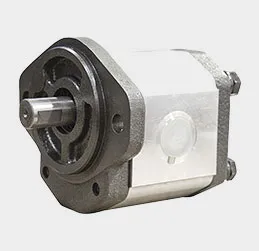precision sheet metal stamping
Precision Sheet Metal Stamping An Overview
In the modern manufacturing landscape, precision sheet metal stamping has emerged as a cornerstone technology across various industries. From automotive and aerospace to electronics and medical devices, this process is integral to producing high-quality components with meeting stringent tolerances. This article delves into the principles, advantages, applications, and advancements in precision sheet metal stamping.
Understanding Sheet Metal Stamping
Sheet metal stamping is a manufacturing process that involves converting flat sheets of metal into specific shapes through a series of steps—primarily stamping, piercing, bending, and forming. Precision refers to the level of accuracy in manufacturing components, ensuring that they meet tight tolerances and specifications. This process typically uses specialized tools, dies, and presses, which play a crucial role in achieving the desired outcomes.
The key to precision stamping lies in the design of the die and tooling. Engineers meticulously design these tools to dictate the geometry of the final product. The stamping process can be performed using mechanical or hydraulic presses, each offering unique benefits. Mechanical presses tend to offer higher speeds, while hydraulic presses excel in providing more force, which can be essential for complex shapes.
Advantages of Precision Sheet Metal Stamping
1. High Precision and Tolerance One of the most significant benefits of precision sheet metal stamping is the ability to achieve tight tolerances—often within ±0.001 inches (±0.025 mm). This precision is crucial in sectors like aerospace, where even minor deviations can compromise safety and performance.
2. Cost-Effectiveness Once the initial tool (die) is created, mass production becomes relatively cost-effective. The process allows for high-volume production, reducing per-unit costs significantly while maintaining quality.
3. Versatility Precision sheet metal stamping can be used with various metals, including stainless steel, aluminum, copper, and more. This versatility enables manufacturers to produce a wide range of components, from simple brackets to complex housings.
4. Consistency and Repeatability Automated stamping processes ensure that each piece produced maintains the same specifications as the previous one. This consistency is vital for applications where part interchangeability is required.
precision sheet metal stamping

5. Reduced Waste The precision of the stamping process minimizes material waste, making it more environmentally friendly. Additionally, blanking (cutting metal sheets) is highly efficient, allowing manufacturers to maximize material usage.
Applications Across Industries
Precision sheet metal stamping is utilized in various sectors. In the automotive industry, it is crucial for producing components like chassis parts, brackets, and housings that require robust durability and precision. The aerospace sector relies on precision stamping for essential components, including wing structures and engine brackets, where safety standards are paramount.
In electronics, precision-stamped parts, such as connectors, casings, and structural components, must fit perfectly to ensure device functionality. The medical device industry uses this technology to manufacture surgical instruments, trays, and device housings in compliance with strict regulatory requirements.
Advancements in Precision Stamping Technology
The landscape of precision sheet metal stamping is continuously evolving, thanks to technological advancements. Computer numerical control (CNC) technology and CAD/CAM systems have revolutionized the design and manufacturing process, allowing for increased precision and reduced lead times. Additionally, advancements in materials science have led to the development of stronger, lighter metals that enhance the capabilities of precision stamping operations.
Moreover, automation and robotics are becoming integral to the stamping process, improving efficiency and reducing labor costs. Automated systems can handle material loading, unloading, and inspection, which enhances safety and consistency while allowing human operators to focus on more complex tasks.
Conclusion
In conclusion, precision sheet metal stamping is a vital process in today’s manufacturing landscape, characterized by its high precision, cost-effectiveness, and versatility. From automotive to electronics, its applications are vast and continue to expand with technological advancements. As industries demand greater precision and efficiency, the evolution of precision sheet metal stamping will play a crucial role in shaping the future of manufacturing, ensuring that it meets the intricate needs of modern design and production.
-
Crawler Mounted Drill Rig-Baoding Hairun Machinery And Equipment Trading Co., Ltd.|Compressed Air Power&Frame SupportNewsAug.15,2025
-
Crawler Drilling Rig - Baoding Hairun|Confined Space Drilling&Mine SafetyNewsAug.15,2025
-
Drill For Confined Spaces-Crawler Mounted Drill Rig | Crawler Drill Rig for SaleNewsAug.15,2025
-
Premium OEM Auto Parts & Stamping - Reliable ManufacturersNewsAug.15,2025
-
Crawler Drilling Rig for Confined Spaces-Baoding Hairun MachineryNewsAug.15,2025
-
Drill For Confined Spaces - Baoding Hairun Machinery And Equipment Trading Co., Ltd.NewsAug.15,2025















